Musical Staff
Contents
Understanding the musical staff is essential to reading drum music. Unlike other instruments that indicate notes, the drum staff indicates pieces of the drum such as snare, bass, cymbals, and toms.
In this lesson, I’ll show you how to read the notes in order to determine which part of the drum set to use. But first, let’s cover the signs and symbols that you’ll see.
The staff consists of five lines. These five lines are boxed in to create one measure. Notes can appear either on one of the five lines or in the four spaces in between.

The above photo shows two measures separated by a dividing line in the middle. The drum clef is a simple mark at the beginning of a piece that indicates the following notes are to be read for percussion. The time signature is represented as a numeral. I cover Time Signatures here.
Notes and rests appear either on lines or in spaces. They can also appear above or below the staff with extra lines added.
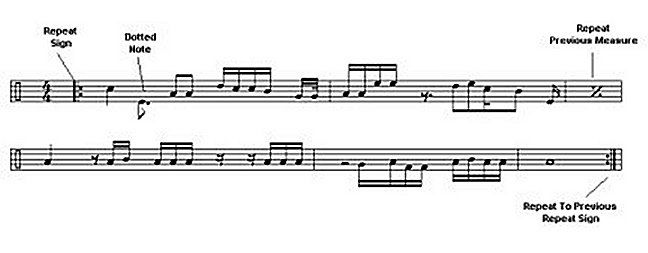
Repeat signs are common in drum sheet music. When by themselves, they are used to indicate that you should repeat the previous measure. If found in pairs, one at the beginning and one at the end, they indicate you should return to the first repeat sign and play the entire section again.
You may also find dotted notes on the staff. These indicate that the value of the note is 1 1/2 times it’s normal value. I cover this more in my lesson on Musical Note Values
.
Drum Notes On The Musical Staff
Whereas other music staff indicate notes like C# or B, drum staffs show parts of the drum set. The ones you’ll see most are the bass, snare, and hi-hats or ride.I’ll cover all of the pieces of the drumset and where they appear on the staff.
In the photo above you’ll notice two cymbals (x’s), one drum (circles), and one cymbal bell (diamond). Now that you know how to read the symbols, let’s go over their placement on the musical staff.
Bass Drum Notes
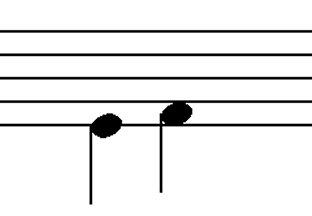
The bass drums are shown on the bottom space of the staff. In the photo above, you’ll notice two notes. One on the space which is the bass drum and one on the line.
If two bass drums are used–often found in metal sheet music–the second bass will appear on the bottom line.
Snare Drum
The snare is always placed on the second empty space. It is mostly shown as a colored in circle though there are exceptions.
It may sometimes be represented with an X or an X in parentheses. In the case of a single X it indicates you should play a cross-stick note.
When the X is in parentheses, it means it is a ghost note.
Rack Toms and Floor Toms
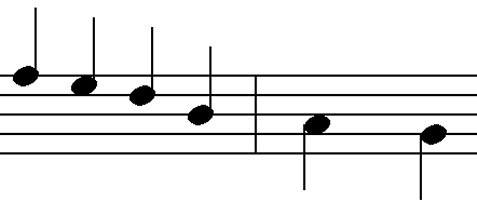
The first four notes are where rack toms can appear. The most common drumsets that only use two mounted toms will be shown on the second and third lines, although I have seen this change depending on the composer.
The last two notes represent floor toms and appear on the third space or fourth line. Again, many drumsets only have one floor tom, which will be indicated by the third space.
Cymbals and Hi Hat
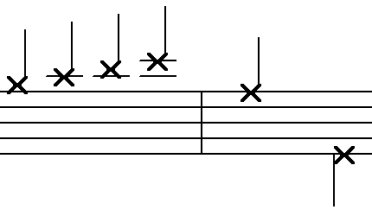
Cymbals appear as X’s on the musical staff. In the picture above they are in order of appearance, ride, crash, splash and china.
The last two notes are hi hat notes. When it appears on the top line of the staff, it should be played with your sticks. When placed on the bottom line it should be played with the foot pedal.
Cymbal Bells
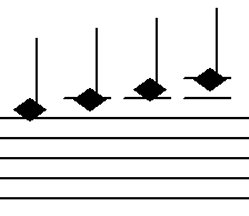
When notes are represented by a diamond, it is indicating that you should play on the bell of the cymbal. The placement of cymbals is the same as above, so the notes above are: ride bell, crash bell, splash bell and china bell.
Now that you know how notes appear on the musical staff, you’re ready to tackle drum sheet music.
Related Drum Lessons:
Beginner Drum Lessons
Quarter Notes
How To Read Drum Music
Return To Lessons on How To Read Drum Music.




New! Comments
Leave your comments below.